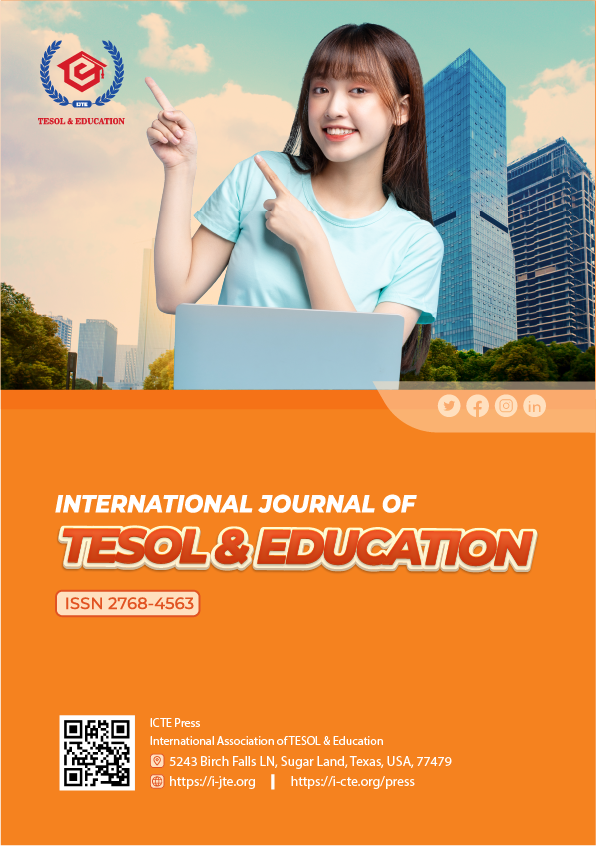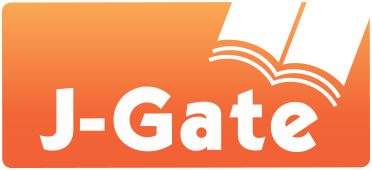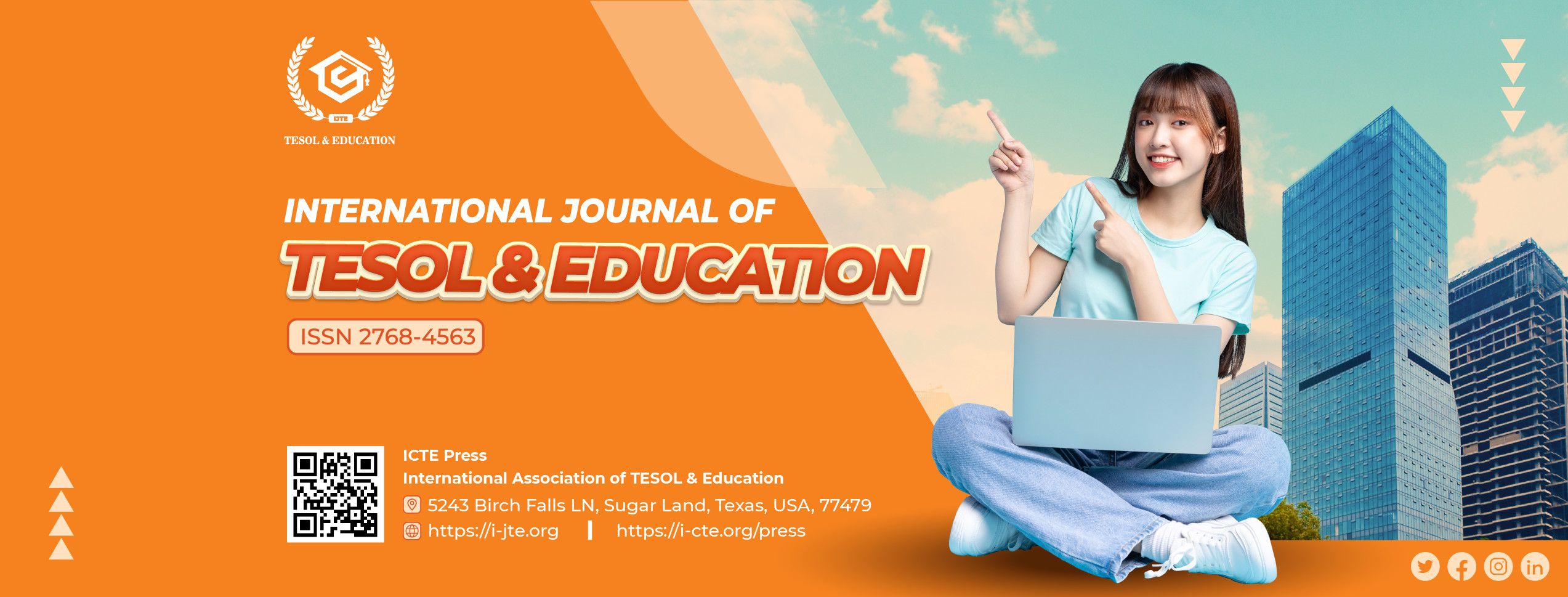Augmented Reality in English Language Teaching: A Literature Review on Catering to Diverse Learning Styles
DOI:
https://doi.org/10.54855/ijte.25514Keywords:
Augmented Reality (AR), English Language Teaching (ELT), Diverse Learning Styles, Learner Needs, Inclusive DesignAbstract
In contemporary educational contexts, the application of Augmented Reality (AR) in English Language Teaching (ELT) has gained significant attention. Thus, the aim of this literature review is to investigate the benefits of AR in accommodating diverse learning styles and individual learner needs within ELT. AR's multisensory features cater effectively to visual, auditory, and kinesthetic learners, enhancing engagement and motivation while promoting inclusivity. For visual learners, AR offers interactive visuals and 3D models; auditory learners benefit from pronunciation guides and immersive dialogues, while kinesthetic learners engage through hands-on interaction with virtual elements. The analysis, grounded in the Universal Design for Learning (UDL) framework, highlights AR's potential in providing equitable learning opportunities. This review synthesizes current research and intends to offer insights to educators and developers who want to utilize Augmented Reality to design language learning experiences that are effective, engaging, successful, and inclusive. It synthesizes current research findings to achieve this goal.
References
Abascal, J., & Nicolle, C. (2005). Moving towards inclusive design guidelines for socially and ethically aware HCI. Interacting with Computers, 17(5), 484–505. https://doi.org/10.1016/j.intcom.2005.03.002
Aguayo, C., Cochrane, T., & Narayan, V. (2017). Key themes in mobile learning: Prospects for learner-generated learning through AR and VR. Australasian Journal of Educational Technology, 33(6), 27–40. https://doi.org/10.14742/ajet.3671
Akçayır, M., & Akçayır, G. (2017). Advantages and challenges associated with augmented reality for education: A systematic review of the literature. Educational Research Review, 20(1), 1–11. https://doi.org/10.1016/j.edurev.2016.11.002
Azuma, R. T. (1997). A survey of augmented reality. Presence: teleoperators & virtual environments, 6(4), 355-385. https://doi.org/10.1162/pres.1997.6.4.355
Belda-Medina, J., & Calvo-Ferrer, J. R. (2022). Integrating augmented reality in language learning: Pre-service teachers’ digital competence and attitudes through the TPACK framework. Education and Information Technologies, 27(9), 12123-12146. https://doi.org/10.1007/s10639-022-11123-3
Beetham, H., & Sharpe, R. (Eds.). (2019). Rethinking pedagogy for a digital age: Principles and practices of design. Routledge.
Black, P., & Wiliam, D. (1998). Assessment and classroom learning. Assessment in Education: principles, policy & practice, 5(1), 7-74.
Bistaman, I. N. M., Idrus, S. Z. S., & Abd Rashid, S. (2018, June). The use of augmented reality technology for primary school education in Perlis, Malaysia. In Journal of Physics: Conference Series (Vol. 1019, No. 1, p. 012064). IOP Publishing. https://doi.org/10.1088/1742-6596/1019/1/012064
Bower, M., Howe, C., McCredie, N., Robinson, A., & Grover, D. (2014). Augmented reality in education–cases, places and potentials. Educational Media International, 51(1), 1-15. https://doi.org/10.1080/09523987.2014.889400
Burgstahler, S. (2015). Opening doors or slamming them shut? Online learning practices and students with disabilities. Social Inclusion, 3(6), 69-79.
Cai, Y., Pan, Z., & Liu, M. (2022). Augmented reality technology in language learning: A meta‐analysis. Journal of Computer Assisted Learning, 38(4), 929-945.
CAST. (2018). Universal design for learning guidelines version 2.2. Retrieved from http://udlguidelines.cast.org/static/udlg2.2-text-a11y.pdf
Chang, Y. S., Chen, C. N., & Liao, C. L. (2020). Enhancing English-learning performance through a simulation classroom for EFL students using augmented reality—A junior high school case study. Applied Sciences, 10(21), 7854. https://doi.org/10.3390/app10217854
Chen, W. (2020). Visual learning through augmented reality. Journal of Educational Multimedia, 19(4), 45-58. https://doi.org/10.3390/app10217854
Cheng, K. H., & Tsai, C. C. (2013). Affordances of augmented reality in science learning: Suggestions for future research. Journal of science education and technology, 22, 449-462. https://doi.org/10.1007/s10956-012-9405-9
Deterding, S., Dixon, D., Khaled, R., & Nacke, L. (2011, September). From game design elements to gamefulness: defining" gamification". In Proceedings of the 15th international academic MindTrek conference: Envisioning future media environments (pp. 9-15).
Do, T. T. L., Pham, N. T., & Ngo, P. A. (2024). Measuring EFL Learners’ Perceptions of Technology Self-efficacy in Online Language Learning. International Journal of Language Instruction, 3(3), 54–78. https://doi.org/10.54855/ijli.24334
Dunn, R., & Dunn, K. (1993). Teaching secondary students through their individual learning styles: Practical approaches for grades 7-12. Allyn and Bacon.
Dunleavy, M., Dede, C., & Mitchell, R. (2009). Affordances and limitations of immersive participatory augmented reality simulations for teaching and learning. Journal of science Education and Technology, 18, 7-22.
Economides, A. A., Parmaxi, A., & Demetriou, A. A. (2020). Augmented reality in language learning: A state‐of‐the‐art review of 2014–2019. Journal of Computer Assisted Learning, 36(6), 861–875. https://doi.org/10.1111/jcal.12486
Fombona, J., Pascual-Sevillana, A., & Gonzalez-Videgaray, M. (2017). M-learning and augmented reality: A review of the scientific literature on the WoS Repository. Comunicar: Media Education Research Journal, 25(2), 63-71.
Garzón, J., & Acevedo, J. (2019). Meta-analysis of the impact of Augmented Reality on students’ learning gains. Educational Research Review, 27, 244-260.
Hall, T. E., Meyer, A., & Rose, D. H. (Eds.). (2012). Universal design for learning in the classroom: Practical applications. Guilford press.
Hattie, J. (2009). The black box of tertiary assessment: An impending revolution. Tertiary assessment & higher education student outcomes: Policy, practice & research, 259, 275.
Hattie, J., & Timperley, H. (2007). The power of feedback. Review of educational research, 77(1), 81-112.
Huang, X., Zou, D., Cheng, G., & Xie, H. (2021). A Systematic Review of AR and VR Enhanced Language Learning. Sustainability, 13(9), 4639. https://doi.org/10.3390/su13094639
Hsu, T. C. (2019). Effects of gender and different augmented reality learning systems on English vocabulary learning of elementary school students. Universal Access in the Information Society, 18, 315-325.
Ibáñez, M. B., & Delgado-Kloos, C. (2018). Augmented reality for STEM learning: A systematic review. Computers & Education, 123, 109-123.
Iqbal, M. Z., & Campbell, A. G. (2021, April). Investigating challenges and opportunities of the touchless hand interaction and machine learning agents to support kinesthetic learning in augmented reality. In 26th International Conference on Intelligent User Interfaces-Companion (pp. 99-101).
Kalyuga, S. (2009). Instructional designs for the development of transferable knowledge and skills: A cognitive load perspective. Computers in Human Behavior, 25(2), 332-338. https://doi.org/10.1016/j.chb.2008.12.019
Ke, F., & Hsu, Y. C. (2015). Mobile augmented-reality artifact creation as a component of mobile computer-supported collaborative learning. The Internet and Higher Education, 26, 33-41. https://doi.org/10.1016/j.iheduc.2015.04.003
Kirschner, P., Sweller, J., & Clark, R. E. (2006). Why unguided learning does not work: An analysis of the failure of discovery learning, problem-based learning, experiential learning and inquiry-based learning. Educational Psychologist, 41(2), 75-86.
Klopfer, E. (2008). Augmented learning: Research and design of mobile educational games. MIT Press. https://books.google.com.vn/books?hl=vi&lr=&id=I0kaFNaK704C&oi=fnd&pg=PR5#v=onepage&q&f=false
Klopfer, E., Squire, K., & Jenkins, H. (2002, August). Environmental detectives: PDAs as a window into a virtual simulated world. In Proceedings. IEEE international workshop on wireless and mobile technologies in education (pp. 95-98). IEEE. https://doi.org/10.1109/wmte.2002.1039227
Kukulska-Hulme, A., & Shield, L. (2008). An overview of mobile assisted language learning: From content delivery to supported collaboration and interaction. ReCALL, 20(3), 271-289. https://doi.org/10.1017/S0958344008000335
Ladau, E. (2021). Demystifying disability: What to know, what to say, and how to be an ally. Ten Speed Press.
Lee, J., & Park, H. (2020). Culturally responsive AR design in language learning. Journal of Cultural Education, 33(2), 101-115.
Li, K. C., & Wong, B. T. M. (2021). A literature review of augmented reality, virtual reality, and mixed reality in language learning. International Journal of Mobile Learning and Organisation, 15(2), 164-178. https://doi.org/10.1504/ijmlo.2021.114516
Liao, C. H. D., Wu, W. C. V., Gunawan, V., & Chang, T. C. (2024). Using an augmented-reality game-based application to Enhance Language Learning and Motivation of Elementary School EFL students: A comparative study in Rural and Urban Areas. The Asia-Pacific Education Researcher, 33(2), 307-319.
Lin, T. J., & Lan, Y. J. (2015). Language learning in virtual reality environments: Past, present, and future. Journal of Educational Technology & Society, 18(4), 486-497.
Lin, L., Wu, C., & Chen, X. (2020). Multimodal content representation in AR. Educational Technology Research and Development, 68(5), 234-251.
Liu, M., Horton, L., & Lee, J. (2023a). Gamification in augmented reality for language learning. Journal of Educational Computing Research, 59(1), 28-50.
Liu, S., Gao, S., & Ji, X. (2023b). Beyond borders: exploring the impact of augmented reality on intercultural competence and L2 learning motivation in EFL learners. Frontiers in Psychology, 14, 1-15. https://doi.org/10.3389/fpsyg.2023.1234905
López Belmonte, J., Moreno-Guerrero, A. J., López Núñez, J. A., & Pozo Sánchez, S. (2019). Analysis of the productive, structural, and dynamic development of augmented reality in higher education research on the web of science. Applied Sciences, 9(24), 5306.
Ly, C. K. (2024). Teachers’ roles on English language teaching for promoting learner-centered language learning: A theoretical review. International Journal of TESOL & Education, 4(2), 78-98. https://doi.org/10.54855/ijte.24425
Manna, M. (2023). Teachers as augmented reality designers: a study on Italian as a foreign language–teacher perceptions. International Journal of Mobile and Blended Learning (IJMBL), 15(2), 1-16. https://doi.org/10.4018/ijmbl.318667
Marrahí-Gómez, V., & Belda-Medina, J. (2022). The application of augmented reality (AR) to language learning and its impact on student motivation. International Journal of Linguistics Studies, 2(2), 07-14. https://doi.org/10.32996/ijls.2022.2.2.2
Martín-Gutiérrez, J., Fabiani, P., Benesova, W., Meneses, M. D., & Mora, C. E. (2015). Augmented reality to promote collaborative and autonomous learning in higher education. Computers in human behavior, 51, 752-761.
Meyer, A., Rose, D. H., & Gordon, D. (2014). Universal design for learning: Theory and practice, Wakefield MA: CAST.
Min, W., & Yu, Z. (2023). A bibliometric analysis of augmented reality in Language Learning. Sustainability, 15(9), 7235. https://doi.org/10.3390/su15097235
Milgram, P., & Kishino, F. (1994). A taxonomy of mixed reality visual displays. IEICE TRANSACTIONS on Information and Systems, 77(12), 1321-1329. Search.ieice.org. https://search.ieice.org/bin/summary.php?id=e77-d_12_1321
Nicholson, S. (2015). A recipe for meaningful gamification. Gamification in education and business/Springer.
Pasfield‐Neofitou, S. (2014). Language learning and socialization opportunities in game worlds: Trends in first and second language research. Language and Linguistics Compass, 8(7), 271-284. https://doi.org/10.1111/lnc3.12083
Pachler, N., Cook, J., & Bachmair, B. (2010). Appropriation of mobile cultural resources for learning. International Journal of Mobile and Blended Learning (IJMBL), 2(1), 1-21.
Pellas, N., Fotaris, P., Kazanidis, I., & Wells, D. (2019). Augmenting the learning experience in primary and secondary school education: A systematic review of recent trends in augmented reality game-based learning. Virtual Reality, 23(4), 329-346. https://doi.org/10.1007/s10055-018-0347-2
Popay, J., Roberts, H., Sowden, A., Petticrew, M., Arai, L., Rodgers, M., ... & Duffy, S. (2006). Guidance on the conduct of narrative synthesis in systematic reviews. A product from the ESRC methods programme Version, 1(1), b92.
Puentedura, R. R. (2013). SAMR: Getting to transformation. Retrieved May, 31, 265-283.
Qiu, X. Y., Chiu, C. K., Zhao, L. L., Sun, C. F., & Chen, S. J. (2023). Trends in VR/AR technology-supporting language learning from 2008 to 2019: A research perspective. Interactive Learning Environments, 31(4), 2090-2113. https://doi.org/10.1080/10494820.2021.1874999
Rose, D. H., & Meyer, A. (2002). Teaching every student in the digital age: Universal design for learning. Association for Supervision and Curriculum Development, 1703 N. https://eric.ed.gov/?id=ED466086
Sannikov, S., Zhdanov, F., Chebotarev, P., & Rabinovich, P. (2015). Interactive educational content based on augmented reality and 3D visualization. Procedia Computer Science, 66, 720-729. https://doi.org/10.1016/j.procs.2015.11.082
Seale, J. (2013). E-learning and disability in higher education: accessibility research and practice. Routledge.
Şimşek, B., & Direkçi, B. (2023). The effects of augmented reality storybooks on student's reading comprehension. British Journal of Educational Technology, 54(3), 754 772. https://doi.org/10.1111/bjet.13293
Tomlinson, C. A. (2014). The differentiated classroom: Responding to the needs of all learners. ASCD. https://books.google.com.vn/books?hl=vi&lr=&id=CLigAwAAQBAJ&oi=fnd&pg=PP1&dq=Tomlinson
Tran, T. M. L. (2024). Blended learning in EFL classrooms at a Vietnamese university from students’ perspectives. International Journal of TESOL & Education, 4(2), 99-117. https://doi.org/10.54855/ijte.24426
UNESCO. (2005). Guidelines for inclusion: Ensuring access to education for all. UNESCO.
Wedyan, M., Falah, J., Elshaweesh, O., Alfalah, S. F. M., & Alazab, M. (2022). Augmented Reality-Based English Language Learning: Importance and State of the Art. Electronics, 11(17), 2692. https://doi.org/10.3390/electronics11172692
Wu, H. K., Lee, S. W. Y., Chang, H. Y., & Liang, J. C. (2013). Current status, opportunities and challenges of augmented reality in education. Computers & education, 62, 41-49. https://doi.org/10.1016/j.compedu.2012.10.024
Wu, P. (2019). Audio integration in AR for language learning. Journal of Language Teaching and Research, 10(3), 477-486.
Yen, J. C., Tsai, C. H., & Wu, M. (2013). Augmented reality in the higher education: Students’ science concept learning and academic achievement in astronomy. Procedia-social and behavioral sciences, 103, 165-173. https://doi.org/10.1016/j.sbspro.2013.10.322
Yulian, R., Ruhama, U., & Sucipto, S. (2022). Developing Augmented Reality (AR) as Assisted Technology in Reading Based on Content-Language Integrated Learning. Jurnal Teknologi Pendidikan, 24(1), 23-37.
Zhao, G., Zhang, Q., Chu, J., Li, Y., Liu, S., & Lin, L. (2018, November). Augmented reality application for plant learning. In 2018 IEEE 9th International Conference on Software Engineering and Service Science (ICSESS) (pp. 1108-1111). IEEE.
Downloads
Published
Issue
Section
License
Copyright (c) 2025 Ngo Nguyen Thien Duyen, Vo Trong Nghia

This work is licensed under a Creative Commons Attribution 4.0 International License.
The copyright of all articles published in the International Journal of TESOL & Education (ijte) remains with the Authors, i.e. Authors retain full ownership of their article. Permitted third-party reuse of the open access articles is defined by the applicable Creative Commons (CC) end-user license which is accepted by the Authors upon submission of their paper. All articles in the ijte are published under the CC BY-NC 4.0 license, meaning that end users can freely share an article (i.e. copy and redistribute the material in any medium or format) and adapt it (i.e. remix, transform and build upon the material) on the condition that proper attribution is given (i.e. appropriate credit, a link to the applicable license and an indication if any changes were made; all in such a way that does not suggest that the licensor endorses the user or the use) and the material is only used for non-commercial purposes.
Authors retain copyright and grant the journal the right of first publication with the work simultaneously licensed under a Creative Commons Attribution 4.0 International License that allows others to share the work with an acknowledgment of the work's authorship and initial publication in this journal.
Authors are able to enter into separate, additional contractual arrangements for the non-exclusive distribution of the journal's published version of the work (e.g., post it to an institutional repository, in a journal or publish it in a book), with an acknowledgment of its initial publication in this journal.











